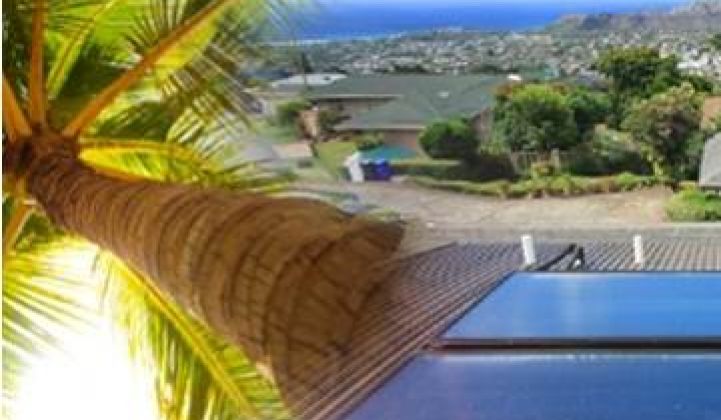In an annual report to the Public Utilities Commission, Hawaii's utility Hawaii Electric Company (HECO) noted there were increased costs to ratepayers as the result of a net metering policy put in place to drive the growth of rooftop solar.
The increase to ratepayers, added to cover the rise in the fixed cost of grid operations resulting from the use of net metering and more solar, was 30 cents per month. But the initial news on that increase misplaced the decimal point and reported it as $3.00 per month.
That's not a lot of money, but it was enough to bring forth some controversy over how much of a rate increase utility customers must bear for adding rooftop solar and other renewables.
The controversy in Hawaii was aggravated by the fact that the charge was only added to the bills of those who do not have solar systems. With net metering, the meters of those who have rooftop systems turn backward when the Hawaiian sun shines. As a result, they pay minimal charges to HECO and do not incur the full cost of grid operations.
This is not simply a matter of which Hawaii residents should pay for solar or how much they should pay. It is a matter of whether adding solar capacity is worth the cost to Hawaiian residents.
One recent study found the price of electricity has already doubled in the last decade for about half of U.S. homes. Utilities from Nantucket Sound to Waimea Bay will be forced to ponder the question HECO now faces.
HECO faces the question now because the island's electricity rate has climbed faster than anywhere else in the country. That is because, explained HECO spokesperson Darren Pai, “almost all of Hawaii’s electricity generation comes from imported oil.” (Actually, 76 percent of Hawaii's electricity comes from oil.)
Power prices started escalating in 2008 when the price of oil went to nearly $150 per barrel. They have since fluctuated. Last year, Pai said, HECO’s ratepayers’ bills increased “$61 per month, and $57 of that was due to the increase in the price of oil.”
This happened because Hawaii’s electricity comes from its imports of diesel, low sulfur fuel oil (LSFO), and naphtha. These are the same petroleum products post-Fukushima Japan began requiring in unprecedented quantities following the shutdown of its nuclear generators. “They’re bidding the price of oil up and we’re the victims of that,” explained Hawaii Solar Energy Association President Mark Duda, “and of setting up a system that makes us a victim of that.”
HECO’s rate structure makes the problem worse, Duda said, because “the utility can’t hedge the fuel price increase. It is passed directly to the ratepayer.”
A big part of the answer to this dilemma for Hawaii is rooftop solar. According to Pai, the state’s installed solar doubled last year, from some 5,100 systems representing 40 megawatts to 10,400 systems and 78 megawatts. That is still a small portion of the state’s 1,700-megawatt peak demand. But at that rate of growth, things shift fast.
Along with the exploitation of its geothermal, rooftop solar -- driven by net metering -- promises to have an important impact on Hawaii’s energy future if the majority of ratepayers do not impede growth by rebelling against the utility bill premium imposed on them. That will not happen if more come around to appreciate that “the benefits of increased PV are quite substantial,” Pai said, especially in the way “increased PV addresses our overall problem of oil dependency.” The net metering premium, Pai said, “is a small subsidy and its benefit outweighs its cost.”
Duda emphasized the same cost-benefit perspective. “Oil is the problem,” he said.
Duda referenced a recent report by Crossborder Energy for the State of California which concluded that the state’s net energy metering (NEM) program “is a crucial component of California’s efforts to encourage electric ratepayers to install clean, renewable DG [distributed generation],” adding that it “removes what might otherwise be a substantial barrier to customer acceptance of DG systems.” It does, the report noted, “impact other, nonparticipating utility ratepayers” but that cost can be “a net cost or benefit for other ratepayers” depending on the design of the system “and on the avoided cost benefits.”
In Hawaii, the cost of oil dependency was $61 per month in 2011 and the cost of more solar was 30 cents per month. The decision for ratepayers who don’t have solar systems is simply this: “30 cents or $60?”
And they might consider what a Honolulu political leader confided to GTM: “We’re burning fossil fuels as fast as we can,” he said, “and anybody with half a brain can see that doesn’t end well.”



